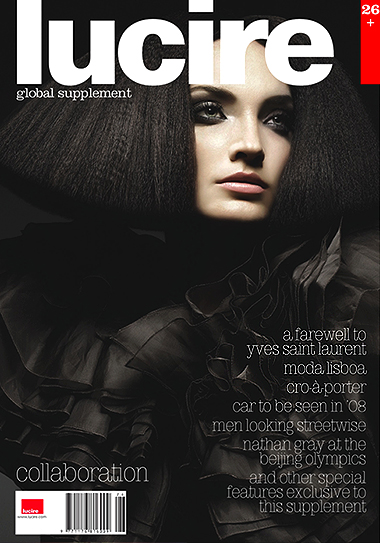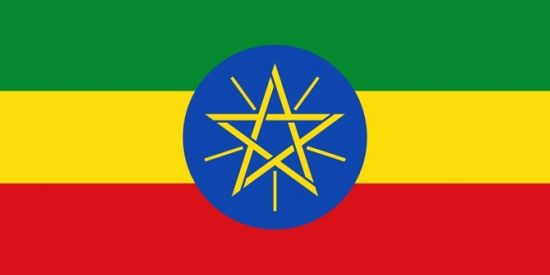 A big believer in Corporate Social Responsibility [CSR] and a very savvy media expert, Jack Yan is the publisher of the global fashion magazine Lucire. He is also an identity and global branding consultant, management consultant, a cross-media specialist, an international columnist, author and speaker. He holds a law degree from Victoria University of Wellington Law School in [New Zealand], has been profiled and interviewed in too numerous a publication and TV shows to name. His book “Beyond Branding” which he co-wrote remains a very important reference for effective business branding in both the fashion and business worlds.
A big believer in Corporate Social Responsibility [CSR] and a very savvy media expert, Jack Yan is the publisher of the global fashion magazine Lucire. He is also an identity and global branding consultant, management consultant, a cross-media specialist, an international columnist, author and speaker. He holds a law degree from Victoria University of Wellington Law School in [New Zealand], has been profiled and interviewed in too numerous a publication and TV shows to name. His book “Beyond Branding” which he co-wrote remains a very important reference for effective business branding in both the fashion and business worlds.
Jack Yan started Lucire Magazine as an online global fashion magazine. The success of Lucire online created a demand from consumers for a print version. Jack Yan responded to the demand by going into print making Lucire the first global fashion magazine to start online and then go print. Jack Yan shares with LADYBRILLEmag.com the importance of media, branding, and how African fashion professionals such as models and designers can feature on the glossy fashion pages of a magazine like Lucire.
LADYBRILLEmag.com: Jack, I know you are a very busy man. So, I am truly grateful you could do this interview for Ladybrille readers. How have you been?
Jack Yan: Very busy, but we are growing Lucire, and we’ve at least another two titles that we want to begin. I find myself joining that bunch of people booked out months and sometimes years in advance.
LADYBRILLEmag.com: Jack, before we get into it, let us discuss what most in the industry are saying is the “death of print magazines,” because of the online fashion media revolution, including blogs. What’s your take on it and how is Lucire able to keep its head above water?
Jack Yan:If you can’t beat them, join them. I have always been a supporter of interacting with readers, which was why we started a forum on the Lucire website in the early 2000s. That forum’s heyday has long gone, but it positioned us as a magazine prepared to listen. Any strategy today has to encompass all media. Print magazines will not die because people want a tangible product. But a print magazine that operates independently of the web, for example, may die because it is ignoring supporters and potential readers. So we now have a blog. We encourage people to suggest stories to us. The future of magazine publishing is to be as humanistic as possible.
LADYBRILLEmag.com:From a media publisher and branding expert perspective, summarize for Ladybrille readers the importance and benefits of using offline and particularly online media to grow their African fashion brands.
Jack Yan: Success for Africa does not come from [International Monetary Funds] IMF loans or other institutions. Success for Africa comes from creating world-class brands that engage the first world, which will raise the standard of living of African people and awareness of African culture globally.
This has been done in other fields from countries that one would not regard as first-world: Dilmah Teas is a global tea brand from Sri Lanka, for instance. And one should remember that Country Road, connected to Australia, has South African ownership. Firms in Africa have an ideal opportunity to promote themselves because they can cut through the clutter.
We are used to seeing the same-old press releases from the west. Both offline and online media would embrace them, because they are potentially newsworthy. I suggest events, targeting all media, and engaging with even bloggers interested in fashion. It’s going to be ever-important to differentiate. As a publisher, I welcome seeing greater African inspiration, whether it’s the heritage of Ethiopia or the colour of Kenya. I look forward to the day when it is not considered a single continent, but that each one of its cultures is celebrated by non-Africans.
LADYBRILLEmag.com: That is wonderful your outlook towards celebrating each country within Africa! Let me direct your attention to a different question. Jack, most African fashion professionals and the few African brands out there are clueless when it comes to interacting with media– especially USA and European media. For those trying to export their fashion goods into the USA, for example, can you shed light/give some tips on how they can and should interact with the media?
Jack Yan: First, there’s a lot to learn from copying. Read others’ press releases and learn the structure. Have great photography—I mean world-class—to accompany anything you send out. Anything to get into the comfort zones of the media is useful, because then your message will be noticed. Be available to media and, initially, personalize the releases as best you can.
Secondly, I really would examine starting social networks and linking through them. These are becoming popular and it should not be hard finding journalists on MySpace, Bebo or Facebook. Don’t commercialize your approach heavily, but get to know the people who can influence and help you, and see if you genuinely have an affinity with them. If you do, chances are they can become your allies.
LADYBRILLEmag.com: Speaking of social networks, a big part of what you do is stressing the importance of online branding. I truly believe that the internet evens the playing field especially for Africa’s fashion industry if they utilize it well. MySpace, for example, recently launched a MySpace fashion site. Retail buyers can see videos of emerging/obscure designers globally as well as place orders for their merchandizes. How do African fashion companies position themselves so they can grow their businesses online?
Jack Yan: You have hit upon this perfectly. Ten years ago, to get noticed online, we would have had to get a lot of links from different sites manually. Now, people can go on to the social networks. The trouble with this strategy if you adopt it solely is that the brand becomes subservient to MySpace’s. The MySpace site is not tidy or glamorous, no matter how you doctor the layout.
Social networks should be a complement, but only to build a community and to make some connections: the general public will still want to see a site uniquely for the designer, and that such a site must have a great and proud brand. It needs to start off with a unique vision for that designer. It needs to look pleasant by first-world standards. The navigation needs to be clear. But overall, the web can be an amazing equalizer and African fashion companies should not be afraid to think big or, as brand consultant Stefan Engeseth puts it, ‘fake it till you make it.’
LADYBRILLEmag.com: Alright expand on the same question but this time, offline?
Jack Yan: Remember that branding is about communicating, symbolizing and differentiating. Focus on the things that make you unique and ensure that you are consistent with them in every contact you have with customers, buyers and media. You might not need to do flashy brochures, but follow the brand attitude you built online and take it into offline.
What differs for Africa is this: if there is a geographic or budgetary gap, then I would focus on building the online brand–the outward manifestation of the company’s vision first, the offline brand second.
LADYBRILLEmag.com:Let’s talk about what it takes for Africa’s fashion models and designers, for example, to feature on the glossy pages of fashion magazines like Lucire.
Jack Yan: Introduce yourselves to me. Get a portfolio together of really beautifully shot work. Tell me a story about your brand that is unique and compelling, and differentiated from all the others in the West. Make your clothing accessible to our stylists and be prepared to ship them out for loan. I don’t need a printed press release: if you can make your email and site look good, you can hook me in. Finally, I should note that we are a little different. The first two Lucires that went on commercial sale in New Zealand had a black model. We do not see race. However, I am afraid some other titles do.
LADYBRILLEmag.com:What happens after, for instance, an African fashion designer receives media coverage? How does that designer turn media coverage into sales and ultimately loyal customers?
Jack Yan: Media coverage is not the one thing that will become sales, but it becomes one of the many parts that show that a designer has credibility. That shows a buyer that the designer is newsworthy and can drive people to stores, lowering the risk. With customers, media coverage gives a brand an element of coolness, which they may wish to associate with. Media coverage is something a designer should compile and use it in any approaches to buyers, getting them over any doubts.
LADYBRILLEmag.com: Do you foresee an expansion into Africa for Lucire?
Jack Yan: Yes, but because our brand is tied to the web strongly and our African readership is low, this is something we are looking at for a longer term. But if something just came up, we would seriously examine it.
LADYBRILLEmag.com: Share three important advices for Ladybrille readers to always remember when it comes to media.
Jack Yan: First, be truthful. Secondly, state your case simply. Verbosity is tantamount to covering up inadequacy. Thirdly, geography is irrelevant today: you will make it because of your excellence.
LADYBRILLEmag.com:Thank you very much Jack. I so appreciate you taking time out of your busy schedule for our readers.
Jack Yan: Thank you for having me. Good luck with everything.
~Republished July 2nd, 2009
Founded in 2007, Ladybrille® Magazine is a California based pioneer digital publication demystifying the image of Africans in the west through contemporary African fashion and celebrating the brilliant woman in business and leadership, with an emphasis on the African woman in the diaspora. Our coverage includes stories on capital, access to markets, expertise, hiring and retention, sales, marketing, and promotions.


